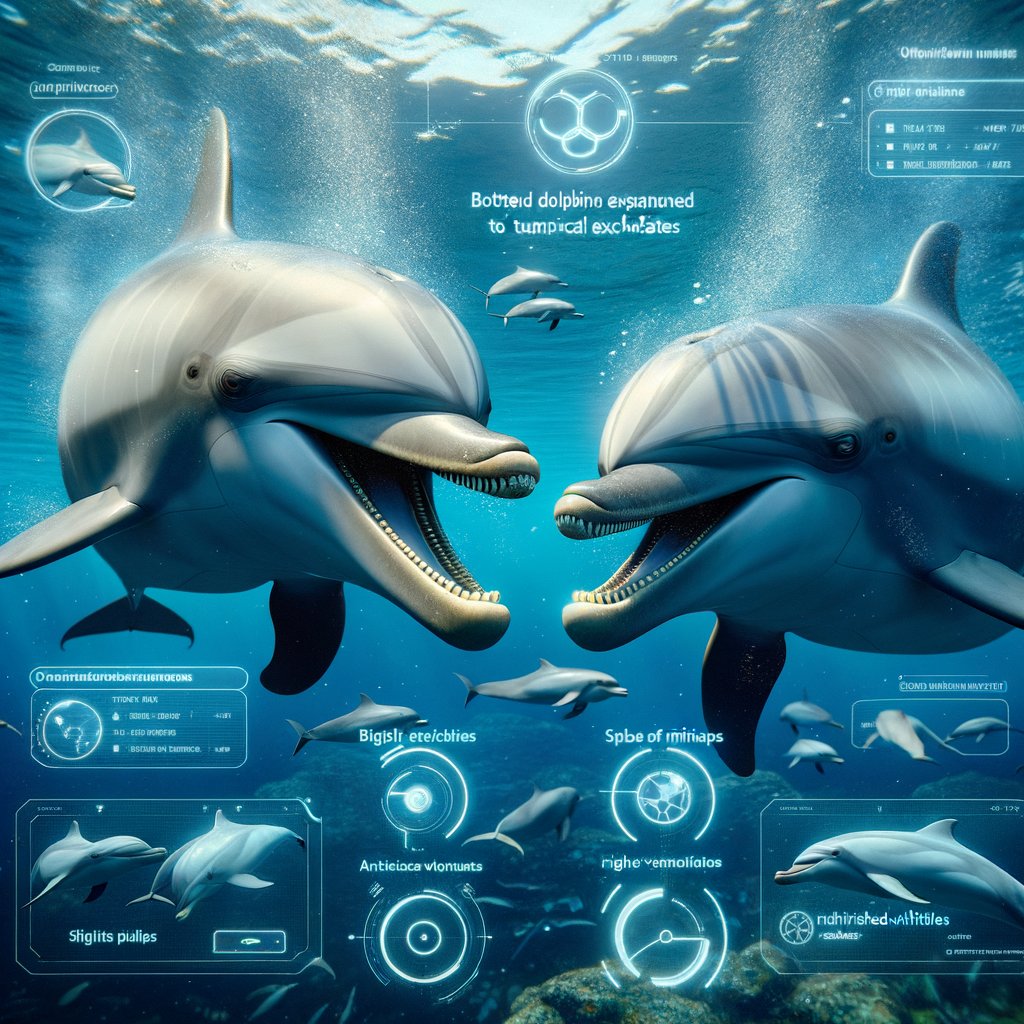Image created by AI
Revealing Playful Secrets: How Bottlenose Dolphins Use Smiles to Communicate
A recent study has unveiled captivating details about the playful interactions of bottlenose dolphins, particularly how they employ facial expressions akin to smiling to communicate during social play. This discovery broadens our understanding of animal communication systems, demonstrating that even creatures with limited facial muscles can use visual signals effectively.
Bottlenose dolphins, residing in a range of aquatic environments from temperate to tropical waters around the globe, including off the African coasts, are renowned for their intelligence and sociable nature. From birth, dolphins engage in playful activities, initially with their mothers and later expanding to their broader social circles. This play is not just a leisure activity but a primary method of interacting and communicating within their pods.
The study, focusing on these dolphins, observed them in controlled environments to better understand how they interacted socially during play. Researchers documented over 1,200 instances of open-mouth expressions —dolphin "smiles"— during various playful scenarios. This facial display, most notable when one dolphin was directly in sight of another, seems to play a crucial role in how these marine mammals engage and respond to each other.
In terms of communication, dolphins rely heavily on an intricate system of vocalizations, including high-pitched whistles, which are essential for recognition and social interaction, especially in murky waters. However, in clearer waters or when proximity allows, visual cues become paramount. The study posited that facial expressions are employed by dolphins for rapid, two-way exchanges during playful interactions, facilitating a more synchronized and cooperative play.
What particularly stood out was the mimicry observed in dolphin interactions. Rapid facial mimicry, a phenomenon also seen in humans and several other animals, was evident when dolphins mirrored each other’s expressions within a split second of seeing them. This mimicry enhances the bond between the playing dolphins, allowing for a more harmonious interaction.
This research highlights not only the complexity of dolphin social behavior but also suggests the evolutionary significance of facial expressions across multiple species. The findings implicate that these visual cues have been a pivotal element in shaping social interactions throughout the mammalian lineage, suggesting a shared evolutionary trait among diverse species.
While the study provided significant insights, it also acknowledged its limitations, such as the inability to observe wild dolphins in their natural habitats, which could offer more nuanced understanding of these interactions. Future research, potentially incorporating technologies like artificial intelligence and advanced tracking methods, could unveil even deeper insights into the rich social lives of dolphins.
Overall, this study not only enriches our comprehension of dolphin behavior but also adds a valuable piece to the puzzle of animal communication, confirming that even the subtlest of interactions can hold the key to understanding complex social systems.










